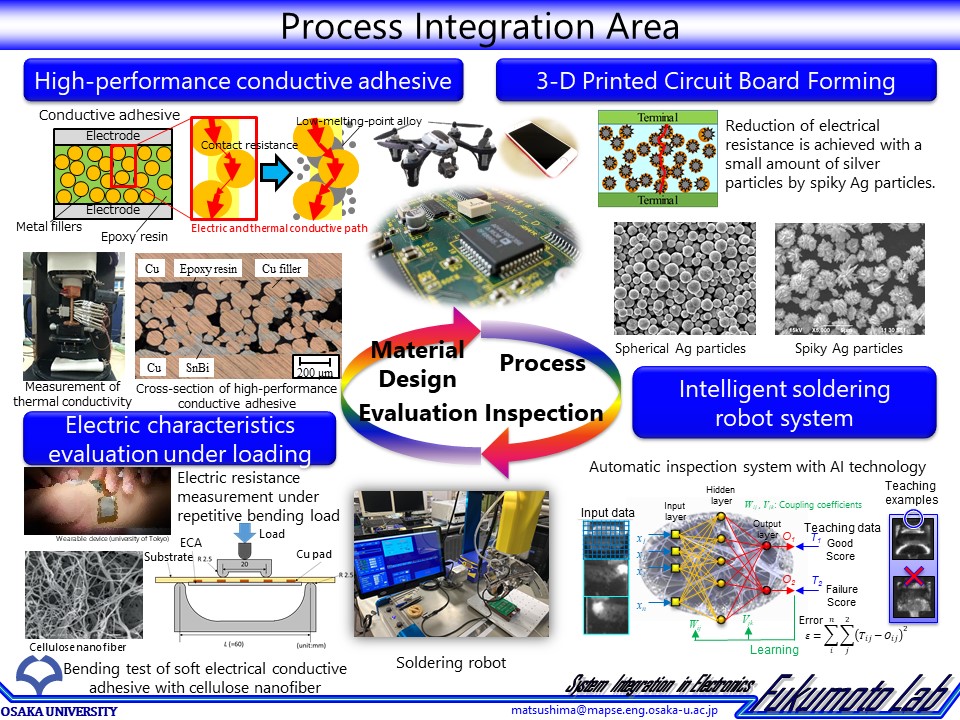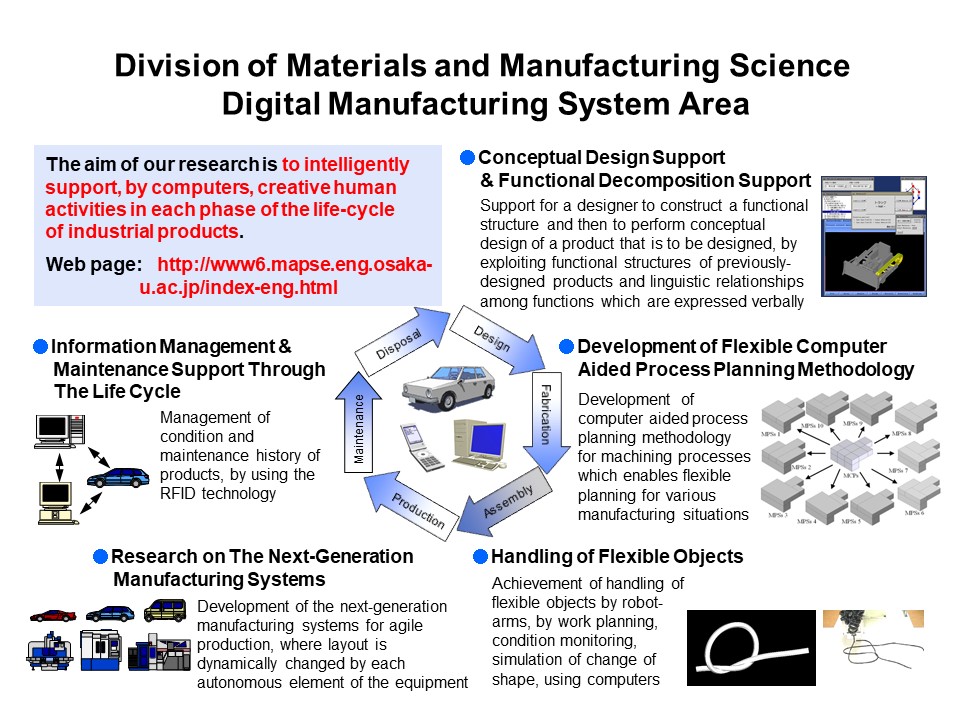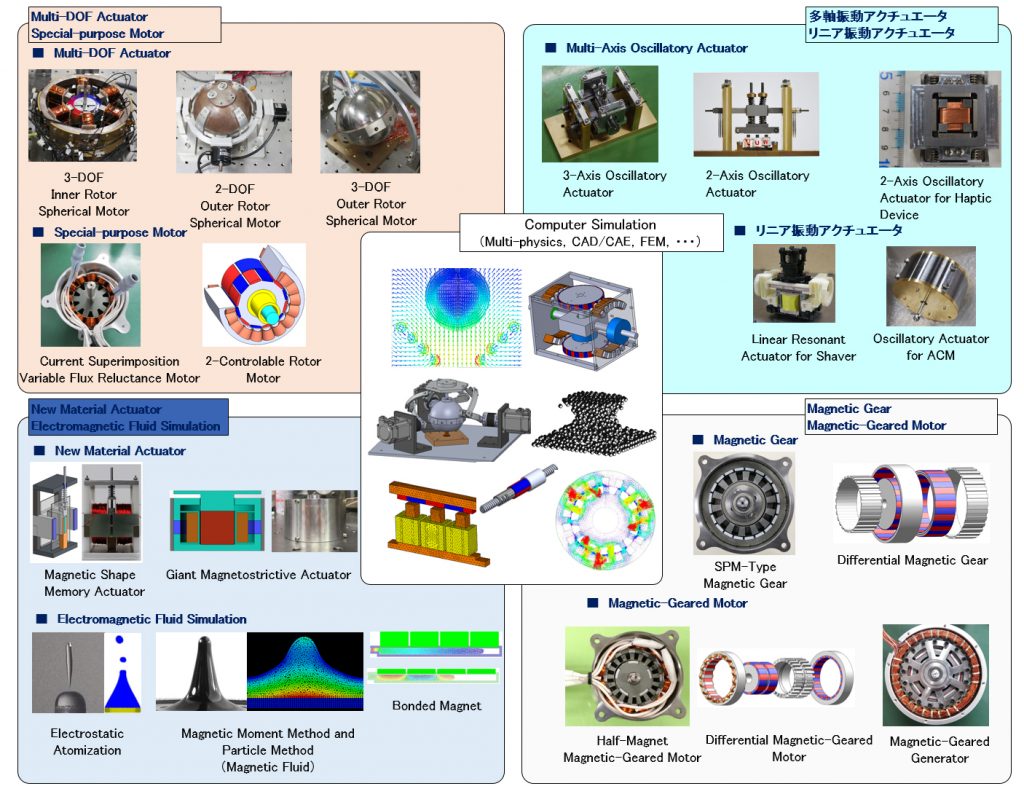The creation of microsystems is necessary to build a safe and secure society in the advanced information age. In this area, we conduct education and research based on physical and chemical phenomena from the viewpoint of integrated process design of electronic devices, such as development of nano- and micro-dissimilar materials bonding process, design of dissimilar materials interface, development of materials for electronic devices, AI robot inspection and reliability of electronic devices.

We aim to develop a methodology for intelligent support with a computer of creative human activities performed in development and production of industrial products. We have been developing computer support methods for prediction of failure occurrence during product use at the conceptual design stage, approximate stress analysis of mechanical parts using minimum training data, design and manipulation planning of flexible structures based on simulation, support with the artificial intelligence of construction and operation of the overall optimized production system etc. so that unexperienced workers can adequately perform those creative activities.

Actuators and sensor technologies are essential in science and industry for the creation of robots, automobiles, home electronics etc. We are conducting research on cutting-edge, next generation actuators and sensor devices that uses new operating principles and new materials. Examples of some of the research and education being conducted include multiple degrees of freedom actuators, linear actuators that are modeled after the human wrist, contactless torque transmitting magnetic gears, magnetic fluids, giant megnetostrictive elements, thermo-sensitive magnetic materials, and nano ion devices.
In doing research on said devices, we are also developing various coupled computational analysis methods. We aim to elucidate the mechanism of complex systems in coupled physics phenomena that include electromagnetics, mechanics, thermodynamics, and fluids by using the Finite Element Method (FEM) and Moving Particle Semi-implicit method (MPS). Based on the analysis results, we determine the optimum design parameters, and evaluate the best control method for our prototype.
At Hirata Lab, it is our policy that members are involved in the entire process of creating the new device; from the idea proposal, to the analysis method development, design optimization, prototype making, control method development etc.

Top